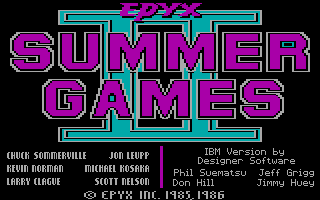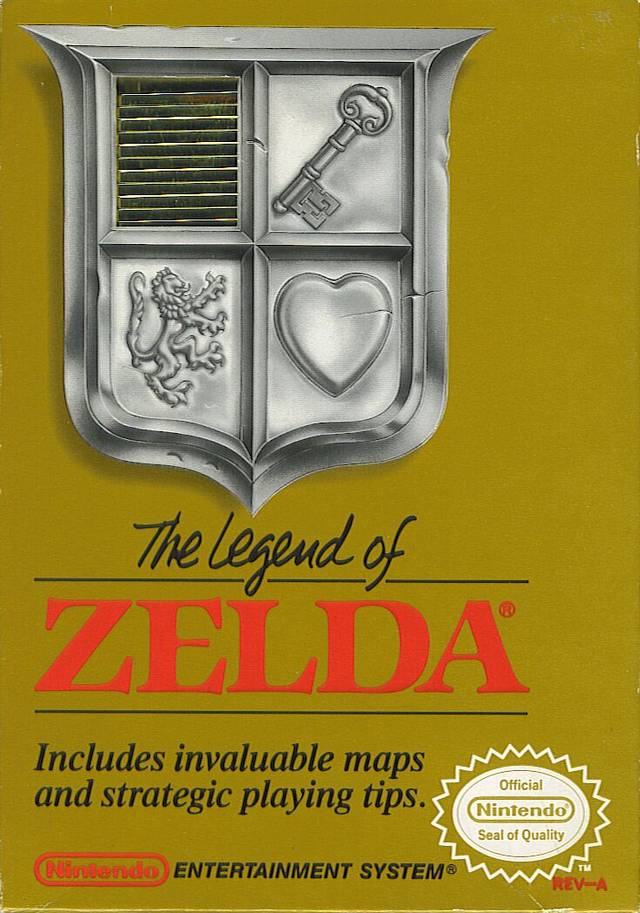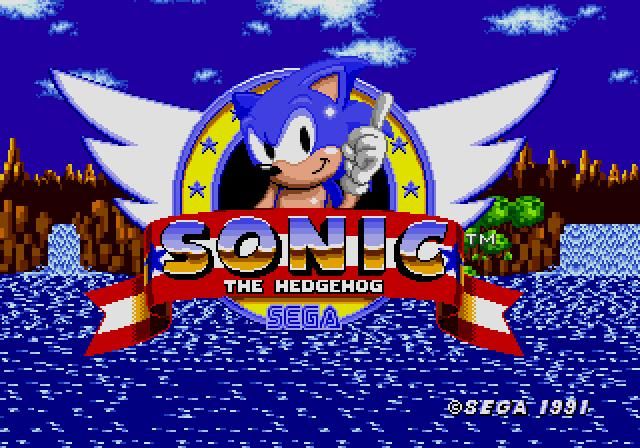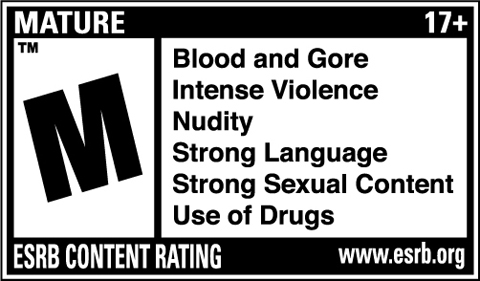A quick note I'd like to add to this blog before continuing with the history, was something I found very interesting from Michael's lecture recently. Despite a lot of people knowing this and being interested in the older games myself, I somehow have never heard of "The great crash", where there were apparently so many mediocre consoles on sale to the public that they lost a huge amount of popularity, plus it meant that many companies went out of business. This surprised me as I thought that since the first console, the market for them has just continued to grow. However, it wasn't until Nintendo released NES that things blew up again and they gained more interest than ever before! This was what you may call the resurrection of video game consoles.
Another thing I found very interesting to learn about was how the personal computer kind of creeped in around the 1980's and gained popularity within the games as well. Funnily enough, this was probably another contributor to the great crash in 1982-83. The fact was that computers at the time were just better in most aspects, affecting the console market. Another reason for this was also due to the loss of publishing control over the games being made; many pirated versions of games were being created so the businesses were no longer very viable.
Going through what happened in the 1990's was a nice bit of nostalgia for me; the Gameboy and Nintendo were in my very early childhood and I could spend hours on end just tapping away at those slightly awkward control systems.
 |
| Pacman Arcade Machine |
 |
| PC Booter game - Summer Games |
The MS DOS went worldwide by 1985 due to its versatility and low cost. As well as being an amazing tool for businesses, you could also play what was called " PC booter games" which required a floppy disk to boot the game. These games competed with the video game comsole ,arket, and in fact, thrived in the period of the crash of consoles in 1983.
1981 is another year where history is made when it comes to iconic retro games. Nintendo creates a game with a character that I personally had during my childhood - Mario. However, this was not his first name, he was originally called "Jumpman". The game Nintendo had created was Donkey Kong, another huge hit with the public. "Jumpman" was "later renamed Mario by Nintendo of America's staff, in honer of his resemblance to their landlord Mario Segali." - The History of Video Games, 2002.
 |
| Atari 5200 |
An interesting side note is that in 1981, the first video game magazine was released by Arnie Katz & Bill Kunkel; it was the first magazine to be purely based around video games. At this point in time, arcades had reached pretty much their peak, with revenues of around $5 billion. I find that it's a shame that now, the arcade is a rare sight in modern places. I don't know about others, but if I see a sign for an arcade, I can't help myself and feel like I must go in. Although, my experiences of an arcade are undoubtedly different from what they were in the 1980's, and I would love to go back in time to see the wonders of a 1980's arcade.
Now we've reached a point in video games history where there was the biggest decline in video game businesses ever. 1982-84 is a significant period in this timeline where things are going on everywhere.
 |
| Colecovision |
"K.C. Munchkin" was a game that many people have not heard of, but would easily mistake it for the iconic Pac-Man. It was produced by Magnavox and done for the Odyssey 2, but Atari saw this and sued the company because it was pretty much the same game; forcing Magnavox to remove the game from circulation.
 |
| Atari 2600 E.T |
Ms. Pac-Man however, becomes the biggest arcade game ever in America, with around 115,000 units sold in the US alone. Namco then responded to this by creating "Super Pac-Man" for Japan, and some chips which changed: Pac-Man's speed, the maps, and the fruits with different bonus items.
Unfortunately, Atari revealed that on December 7th, that VCS sales didn't sell as well as they hoped, and Warner Communications' stock dropped by 32% in just one day!
 Even though multiplayer had been around for a while now, it still hadn't kicked off quite so much, but in 1983 "M.U.L.E.", which had a focus on multiplayer and was a turn-based strategy game for up to four people. This was a big step for the multiplayer concept, although, it still didn't burst into the public and fill them with excitement, nevertheless, it was still popular to some extent.
Even though multiplayer had been around for a while now, it still hadn't kicked off quite so much, but in 1983 "M.U.L.E.", which had a focus on multiplayer and was a turn-based strategy game for up to four people. This was a big step for the multiplayer concept, although, it still didn't burst into the public and fill them with excitement, nevertheless, it was still popular to some extent. |
| The Falcon Project - Luma |
Still in 1983, Coleco reveals the 'Adam Computer' in June with the game 'Donkey Kong'. They don't have computer rights for this game however, and Nintendo threatens them with a lawsuit. In other big news, Nintendo released the 'family computer' "Famicom" exclusively to Japan, then signs an agreement with Atari to distribute it elsewhere. Although, this was short-lived when it was "revealed that Ray Kassar sold a quarter of a million dollars worth of Warner stock on 6th December 1982, the day before Atari made an announcement that caused the stock to fall." - Ref 2.
 Here we've come to a very depressing period of video games & consoles, the big crash of 1983. There was so many products/consoles on for sale to the public, that many third-party companies are put out of business. There was loss over publishing control for games and many games were being pirated, which in-turn results in big losses by the big companies. Even the companies that survived, couldn't keep up with these incredibly cheap games and therefore also lost money on inventory not being sold.
Here we've come to a very depressing period of video games & consoles, the big crash of 1983. There was so many products/consoles on for sale to the public, that many third-party companies are put out of business. There was loss over publishing control for games and many games were being pirated, which in-turn results in big losses by the big companies. Even the companies that survived, couldn't keep up with these incredibly cheap games and therefore also lost money on inventory not being sold.This reference has the main points listed in detail, and is very interesting to read, especially as the writer has experienced this happening, and offers personal thoughts at the time: Ref 4. I myself did not get to experience such a time, and I have to remember a point said by this person, that there wasn't really a place to go to review/play games, so the box art was there to give you a taste of what you're paying for. Therefore, with so many of these weird games, who was to know what was good to buy or not? Another interesting read was ref 5, as it questions whether or not such a thing may happen again. All of this talk of consoles and it's easy to forget that the PC gaming market was still growing and bigger than ever.
 |
| Oldest version of Tetris I could find |
I personally love Tetris too, how can you not? It's a time killer, fun to play, and simple to grasp; the ultimate combination for an addictive game! There are so many versions of Tetris available out today, including 3D Tetris (which is awesome by the way!), and the graphics have obviously improved since back then, making an all round fun game for all ages.
 |
| Nintendo Entertainment System (NES) / Famicom |
 |
| The Legend Of Zelda - 1986 Famicom |
Now, another console wars brews as Sega introduce its "Sega Master System" in the US. In addition to this, Atari reassesses the video game situation and releases the 7800, following on from the 5200. Although, Nintendo by far "outsells its competitors 10 to 1 in the US" - Ref 2. In addition to this, they release a disk drive attachment for the Famicom, as well as "The Legend of Zelda" & various sporting games I.e. Football/Soccer & Golf. Nintendo then signs third-party developers to allow them to create games for the Famicom.
In terms of the computer market, games are still being produced and sold, including the big ones originally released on the consoles. In additional to games to play for fun, the "Learning Company" puts together the "Reader Rabbit" program, which thrives with the creation of CD-ROMs in the 90's, but the internet shortly halts this program.
In 1988, Coleco couldn't recover from the disappointing Adam computer, and goes bankrupt. Meanwhile, Atari Games and Nintendo have a little dispute in which Atari claims that Nintendo has an illegal economic advantage on the games industry, so that they are the dominant sellers. In addition to this, Atari creates "Tengen" which produced games for home consoles, and they find a method of producing games for the NES but without Nintendo's approval of it - If you ask me, that's a pretty dangerous game to play. Later in 89, Tengen buy the rights of Tetris from Microsoft (of which wasn't actually theirs), and Nintendo had rights to it. Therefore, Nintendo released their own version of Tetris and forced the Tengen version out of the marketplace. What I find interesting in this whole situation is that it seems as if the companies are going at each other like dogs, fighting to be on top.
 |
| Nintendo's GameBoy |
We've hit the 90's! - Handheld games!
This was an amazing year for Nintendo all-round. Not only did they release Super Mario 3 (The best selling video game cartridge), they also released the Super Famicon which had better hardware than all of the other competitors. Super Mario 4: Super Mario World is also released to the Japanese market. Although, yet another dispute has to be resolved, this time with Nintendo & Blockbuster. One incidence involved Nintendo's claim that video game rental was inhibiting sales (Court sided with Blockbuster), the other was that Blockbuster had copied copyrighted game manuals (Court sided with Nintendo).
NEC's handheld device named "TurboExpress" was also released and it was the first portable gaming device that could play a dedicated console's game.
As well as these, the Neo-geo was released with an incredible price tag of $650 and $200 per game! - Ref 8. However, it boasted great graphics & was considered the best for some. The 90's was also a period which significantly noticed a decline in the classic arcade machines; a sad thought, as even though I didn't get to play on them, I would have loved to have experienced it fully.
 |
| Windows 3.0 |
 |
| Sonic the Hedgehog 1991 |
1992 was the year that Nintendo and Sony breaks their partnership and announces that they plan to work with Philips to make a CD-ROM that can be used on the Philips CD-i. Sony then scraps previous work for Nintendo to start on a 32-bit CD gaming device. Another console that didn't go very far was called the '3DO', which was also a 32-bit gaming console. It was released in 93 but stopped around 95 due to the news of 64-bit gaming. - Ref 2.
 |
| Example of an ESRB game rating |
Towards the end of 1994, the Japanese market receives the blessings of Sega's 'Sega Saturn', and Sony's 'Playstation', then they hit the US market in 1995. However, Sega expressed that it'd be released on 'Saturnday' - September 2nd, but instead released it 4 months earlier since the Playstation was coming out at the same time. This meant 3rd party developers weren't prepared for it, so almost nothing was made for it, also, the price was $399 which is rather expensive, so Sony dropped the launch price to $299 ($100 cheaper) and it turned out to be a very successful move for Sony. - Ref 9.
During 95, the wonderful Nintendo 64 hit the Japanese market, it was much sought after and broke previous Nintendo sales records. However, far more game were being produced for the Playstation and sales of the N64 slowed greatly after a short period of time. Games like 'Goldeneye 007', 'Supar Mario 64' & 'The Legend of Zelda' were big sellers for the N64 and are considered some of the most favourite childhood games of my generation. I myself haven't played these, but I haven't heard anything negative about them, just people feeling nostalgic when they talk about them. In addition, the latest version of windows was released during August, 'Windows 95'. I don't remember owning one, but I do remember having a Windows 98. It's amazing to see how far technology has come in just 18 years from Win95.
 |
| Lara Croft: Tomb Raider (L to R = 1996 to 2011) |
 |
| Sony's Playstation 1 |
Guess what else comes out this year too... The Tamagotchi! It was already out for Japan in 96, but this pet concept was extremely popular and they were everywhere! In fact, I remember my brother owning 5 of those things, I was too young to know how to use it properly, so kind of messed it up for him... By accident of course! Oh, and remember the chess program I mentioned in the first part? Well, the program named 'Deep Blue' on an IBM computer, beat the world champion Gary Kasparov in a match. - Ref 11.
Sega releases the 'Dreamcast' in 98, but there were some other names being tossed around before this was official, I.e. 'Black belt', 'Katana' & 'Dural'. It uses a 64-bit MS Windows CE operating system which makes it much easier to transfer game to and from the PC. Sales begin in Japan on the 27th of November, and the 150,000 units get sold right away, and a whopping 132,000 Virtua Fighter 3 copies. Unfortunately during this year, Sega pretty much give up on the Saturn, and it isn't really of much significance anymore. Rumours begin to circulate about the upcoming Playstation 2, and that it may be released in 2000 with a DVD-compatible drive.
 |
| The Legend of Zelda: Ocarina of Time - Limited & normal Edition |
Another big part of 1998 was the Gameboy Colour! Now, I loved this thing and could play for hours on Pokemon. Nothing would beat a sick day off school and playing through the whole Pokemon Red version in 6 hours. Anyway, the Pokemon tv series was already out in Japan, and came to the US, but with edited scenes due to epileptic inducing images that were experienced by around 700 Japanese viewers. - Ref 2. The Pokemon Red & Green were released in Japan in 96, but didn't come to the US till a few years after. These game along with Pokemon Blue & Yellow (Special ed), were Nintendo's best selling games for the Gameboy.
 |
| Original X-box Logo - Announced console in 1999, released 2001 |
Sony then reveal the new specs for the PS2 which would come out later in 2000. I personally loved the idea that the PS could play audio cds & dvds; along with the great games to the PS2, I think it was more value for money with the built-in dvd player - It was extremely useful when I was growing up. A few other things happened this year, but to finish this off, 'Connectix' brings the 'Virtual Game Station' to the Macintosh which allowed players to emulate Playstation games on it. I think this is quite cool, but Sony wasn't very happy, and rightly so! Not to mention the price tag of $149. Plus, 'Bleem' then releases one for the IBM computers for just $19.95! Sony tried to stop this but couldn't for some reason. - Ref 2.
 |
| Everquest - MMORPG 1999 |
Thank-you for reading this far, the next shall include a short run through of the big dogs from 2000-2013.
References:
1-http://www.operating-system.org/betriebssystem/_english/bs-msdos.htm
2-Leonard Herman, Jer Horwitz, Steve Kent, Skyler Miller. (2002). The history of video games.
3-http://mcurrent.name/atarihistory/videophone.html
4-http://www.telegraph.co.uk/sponsored/rbth/technology/7847705/Tetris-the-worlds-best-known-computer-game-was-born-in-Russia.html
5-http://plus10damage.com/blog/2013/8/25/retroactive-the-video-game-crash-of-1983
http://www.denofgeek.com/games/24531/the-1983-videogame-crash-what-went-wrong-and-could-it-happen-again
6-http://videogamegeek.com/videogameplatform/6550/pc-booter
7-http://www.gametrog.com/GAMETROG/SUPER_NINTENDO_SNES_Information_Specs.html
8-http://www.computerandvideogames.com/403360/features/history-lesson-neo-geo/
9-http://www.cyberiapc.com/vgg/sega_saturn.htm
10-http://galleyslaves.blogspot.co.uk/2009/03/nintendos-project-atlantis.html
11-http://www.icheg.org/icheg-game-history/timeline/
Image References:
http://thedoteaters.com/tde/wp-content/uploads/2013/03/ea-MULE-1024x768.png
http://www.digicamhistory.com/Mitsubishi%20LumaVSmall.jpg
http://www.denofgeek.com/games/24531/the-1983-videogame-crash-what-went-wrong-and-could-it-happen-again
http://www.oldskool.org/pc/flopper/graphics/sumtitle.gif
http://petrastorrs.com/wp-content/uploads/2011/10/4a.gif
http://www.playerschoicevideogames.com/misc_images/nintendo.jpg
http://www.controlpadblues.com/wp-content/uploads/2012/12/563433_29025_front.jpg
http://d3nevzfk7ii3be.cloudfront.net/igi/EFnZNt6KONrV2V2i
http://toastytech.com/guis/win30logo.gif
http://nerdsontherocks.com/wp-content/uploads/2011/09/01-Sonic-The-Hedgehog-1.jpg
http://evolve-pr.com/wp-content/uploads/2011/04/witcher_ESRB-logo.jpg
http://blogs.arts.ac.uk/london-college-of-communication/files/2010/02/lara_croft.jpgSNAc_DvXk1s/USTRakFAfNI/AAAAAAAAHIU/Sxnvq9Gcu7s/s1600/PS1.jpg
http://inintendo.net/Articles/ZeldaHoliday/OcarinaofTimeGold.jpg
http://www.themobhasspoken.com/wp-content/uploads/2013/04/xbox-logo.jpg
http://cdn.segmentnext.com/wp-content/uploads/2013/03/Everquest.jpg
No comments:
Post a Comment